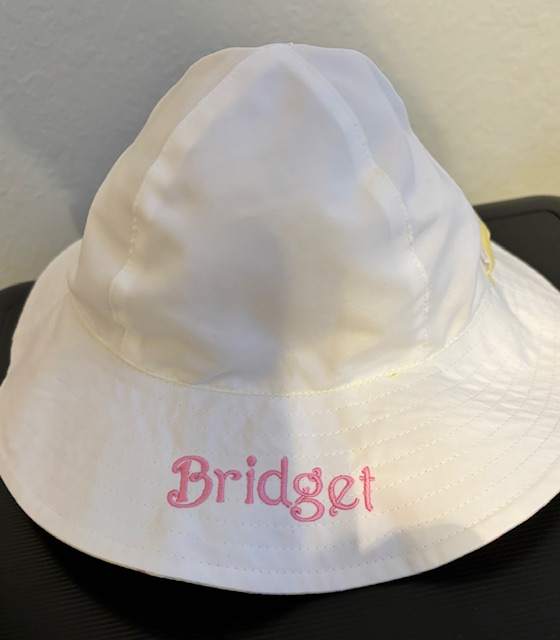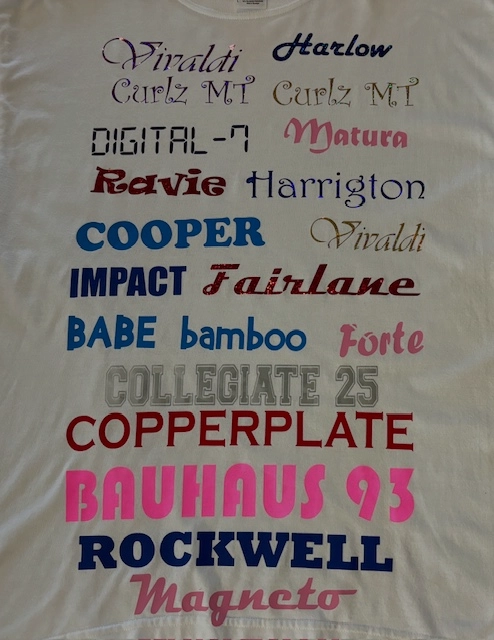The Art of Customized Embroidery: Unlocking the Tricks to Creating Distinct and Unforgettable Styles
The keys to producing custom needlework designs that mesmerize the eye and leave an enduring impact lie in a delicate balance of method, creativity, and interest to detail. As we dive into the globe of custom-made needlework, we uncover the nuanced interaction between string choice, sew complexity, and layout customization that elevates a plain garment to a work of art.
Picking the Right Embroidery Threads
When choosing needlework strings, what essential aspects should you take into consideration to ensure the most effective outcomes for your personalized layouts? The choice of embroidery string is critical in determining the final result of your embroidered style. Among the primary factors to consider is the product of the thread. Various products such as cotton, polyester, rayon, and silk supply differing degrees of sheen, resilience, and structure. It is necessary to choose a string material that matches the material you are embroidering on and lines up with the preferred look of the design.
Thicker strings can add measurement and structure to your design, while finer strings are optimal for intricate information and small message. Additionally, taking into consideration the color fastness and washability of the thread is crucial to ensure that your personalized layouts preserve their top quality and vibrancy over time.
Exploring Different Stitch Methods
To dive right into the realm of 'Discovering Different Stitch Methods', one should comprehend the complexities and subtleties that each stitching technique brings to the art of embroidery. Various stitch techniques not just add aesthetic rate of interest but additionally add to the overall structure and dimension of the design. One popular stitch method is the satin stitch, which includes very closely jam-packed parallel stitches to create a smooth and glossy surface, perfect for completing forms and developing bold describes.
On the various other hand, the backstitch is a functional technique typically utilized for laying out and including fine information. It involves stitching backwards to produce a strong line of needlework. In addition, the French knot stitch includes a responsive component to designs, perfect for creating textured accents like flower centers or ornamental touches.
Checking out various stitch methods permits embroiderers to have fun with light, darkness, and depth within their layouts, elevating the visual appeal and artistic quality of their embroidery tasks. By understanding numerous sewing approaches, one can open limitless opportunities for producing distinct and unforgettable personalized needlework items.
Incorporating Personalized Layout Elements
Having actually checked out the ins and outs of various stitch methods such as the satin stitch, backstitch, and French knot, the focus currently shifts in the direction of incorporating tailored style elements in personalized embroidery tasks. Customized layout aspects play an essential duty in making embroidery tasks really special and unforgettable.
One more way to include customized layout elements is by consisting of icons or motifs that hold unique meaning to the recipient or mirror their interests and character. For instance, incorporating a preferred blossom, animal, or hobby-related sign can make the needlework layout much more significant and personalized. Additionally, choosing shades that reverberate with the recipient or line up with the desired motif can further improve the customization of the needlework task.
Mastering the Art of Color Sychronisation

One key aspect of shade control is understanding color concept. This consists of recognizing how different shades interact with each other, the emotions they share, and how they can be combined to produce aesthetically enticing designs. By applying color concept concepts, embroiderers can create harmonious color combinations that improve the total appearance of the design.
Additionally, taking notice of comparison is crucial in color coordination. Using contrasting shades can help certain elements of the style pop, enhance clarity, and produce an aesthetically vibrant needlework item. By understanding the art of shade control, embroiderers can boost their layouts and create unforgettable pieces that resonate with clients and audiences alike.
Enhancing Structure With Advanced Embroidery Stitches

Bullion knots, on the other hand, can be made use of to develop twisted, ropelike aspects that add a luxurious feeling to the embroidery. Experimenting with these advanced needlework stitches enables you to push the borders of standard embroidery and develop genuinely distinct and visually enticing structures in your designs.
Verdict
In final thought, the art of custom needlework involves a mix of selecting the right strings, checking out various stitch strategies, including personalized design elements, understanding color sychronisation, and improving appearance with sophisticated stitches. By understanding and implementing these crucial elements, embroiderers can develop distinct and remarkable designs that click this site display their creativity and skill. Needlework enthusiasts can open the keys to producing beautiful and bespoke items that stand out and leave a long-term impression.